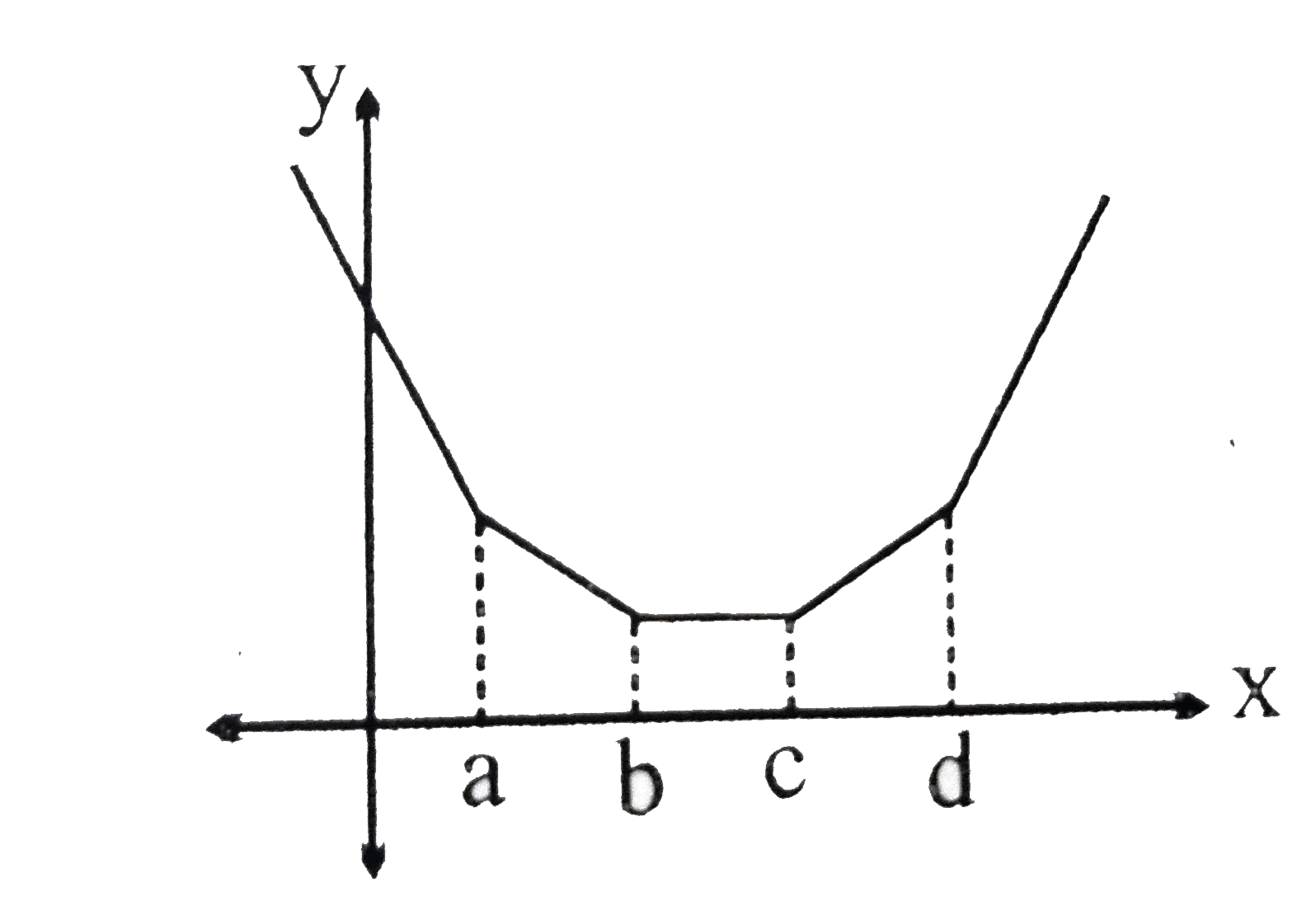Let a,b,c,d ∈ N and a<b<c<d such that the equation |x−a|+|x−b|+|x−c|+|x−d|=20−2(a+b) has infinite solutions then find the number of possible quadruplets (a,b,c,d).
Text Solution
552
f(b)=f( c)=d+c-a-b=20-2(a+b)
∴a+b+c+d=20
Let a=x,b=a+y,c=b+z, d=c+w
∴ 4x+3y+2z+w=20
As 23×4≠552.

|
Topper's Solved these Questions
- TEST PAPERSBOOK - BANSALCHAPTER - TEST PAPERSEXERCISE - PHYSICS SECTION - 1 PART-A [SINGLE CORRECT CHOICE TYPE]
18 Videos
- TEST PAPERSBOOK - BANSALCHAPTER - TEST PAPERSEXERCISE - PHYSICS SECTION - 1 PART-B [MULTIPLE CORRECT CHOICE TYPE]
5 Videos
- TEST PAPERSBOOK - BANSALCHAPTER - TEST PAPERSEXERCISE - CHEMISTRY SECTION-2 Part-C ( Integer type )
10 Videos
- PROBABILITYBOOK - BANSALCHAPTER - PROBABILITYEXERCISE - All Questions
1 Videos
- THERMODYNAMICSBOOK - BANSALCHAPTER - THERMODYNAMICSEXERCISE - Match the column
7 Videos
Similar Questions
Knowledge Check
If a<b<c<d, then the quadratic equation (x−a)(x−c)+2(x−b)(x−d)=0 has its roots
ArealBimaginaryCone root in (a,c)Dboth roots in (a,c)If a<b<c<d, then the roots of the equation (x-a)(x-c)+2(x-b)(x-d)=0 are
Areal and distinctBreal and equalCimaginaryDNone of the aboveIf a<b<c<d, then the eqution 3(x−a)(x−c)+5(x−b)(x−d)=0 has
Areal and distinct rootsBreal and equal rootsCpurely imaginary rootsDnone of these
If a<b<c<d then show that (x−a)(x−c)+3)x−b)(x−d)=0 has real and distinct roots.
View SolutionIf a<b<c<d, then the equation (x−a)(x−c)+2(x−b)(x−d)=0 has ( a) Imaginary roots (b) equal roots (c) distinct real roots (d) none of these
View SolutionLet a,b,c,d be distinct integers such that the equation (x−a)(x−b)(x−c)(x−d)−9=0 has an integer root 'r', then the value of a+b+c+d−4r is equal to :
View SolutionLet a,b,c,d be distinct integers such that the equation (x−a)(x−b)(x−c)(x−d)−9=0 has an integer root 'r', then the value of a+b+c+d−4r is equal to :
View SolutionIfa,b,c,d∈R such that a<b<c<d, then roots of the equation (x−a)(x−c)+2(x=b)(x−d)=0
View Solution
